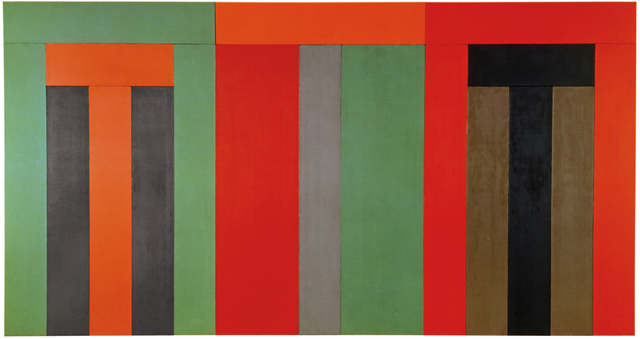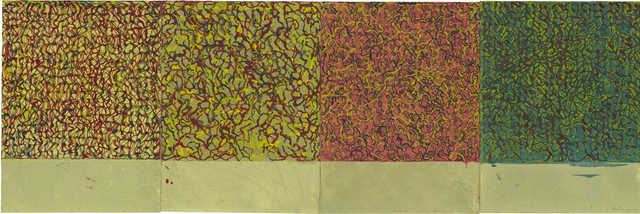Brice Marden
Brice Marden pushed the boundaries of lyrical abstraction by employing self-imposed rules, limits, and procedures, influenced by his extensive travels. His work integrated the diagrammatic approach of Minimalism, the immediacy inherent in Abstract Expressionism, and the intuitive strokes of calligraphy to explore gesture, line, and color.
Biography of Brice Marden
Brice Marden was born in Bronxville, New York. He obtained an MFA from Yale University’s School of Art and Architecture, where he was mentored by painters Alex Katz and Jon Schueler. Following his graduation, he worked as a guard at the Jewish Museum in New York City. During a 1964 retrospective of Jasper Johns' work at the museum, Marden extensively studied Johns’s early pieces, reflecting on them in connection with the Baroque masters he had long admired, such as Francisco de Zurbarán, Francisco Goya, and Diego Velázquez.
Marden's artwork from the 1960s features subtle, shimmering monochromes in gray tones, at times arranged into multi-panel compositions, echoing the style of Robert Rauschenberg's black paintings and "White Paintings." Rauschenberg notably employed Marden as a studio assistant in 1966.
In the early 1970s, a trip to Greece inspired Marden to create the "Hydra" paintings (1972), capturing the turquoise hues of the Mediterranean, and "Thira" (1979–80), an artwork composed of eighteen interconnected panels reflecting the shadows and geometry of ancient temples. To enhance the impact of each color, plane, and brushstroke, Marden developed a unique process of incorporating beeswax and turpentine into oil paint, applying the mixture in numerous thin layers.
In the 1980s, Marden introduced organic, intersecting lines into his work, forming rhythmic patterns over expanses of color. This exploration of winding lines led him to experiment with the use of blank space, erasure, and allusions to the natural world. He aimed to evoke a mystical experience through the creation of elusive abstract spaces. Overlapping his numerous themes and techniques, Marden integrated them into cohesive, often multipart pieces, which he termed his "summation paintings." One notable example is "The Propitious Garden of Plane Image, Third Version" (2000–06), part of the collection at the Museum of Modern Art in New York, where he had his retrospective in 2006.
In his later years, Marden continued his exploration of the qualities found in monochrome. This focus on subdued colors influenced his calligraphic drawings and canvas works, such as the "Nevis Stele" paintings (2007–15), inspired by Chinese stone carvings from the late eighth century. By 2017, he shifted his attention to the expansive possibilities of terre verte (green earth), an iron silicate clay pigment he initially used in the "Grove Group." These paintings feature various brands of terre verte, each presenting a variation on the elusive hue.
Years:
Born in 1938
Country:
United States of America, New York
Gallery:
Van de Weghe
Anthony Meier
ACQUAVELLA
BERNIER/ELIADES GALLERY
Gemini G.E.L.
Gagosian
Peter Freeman, Inc.


